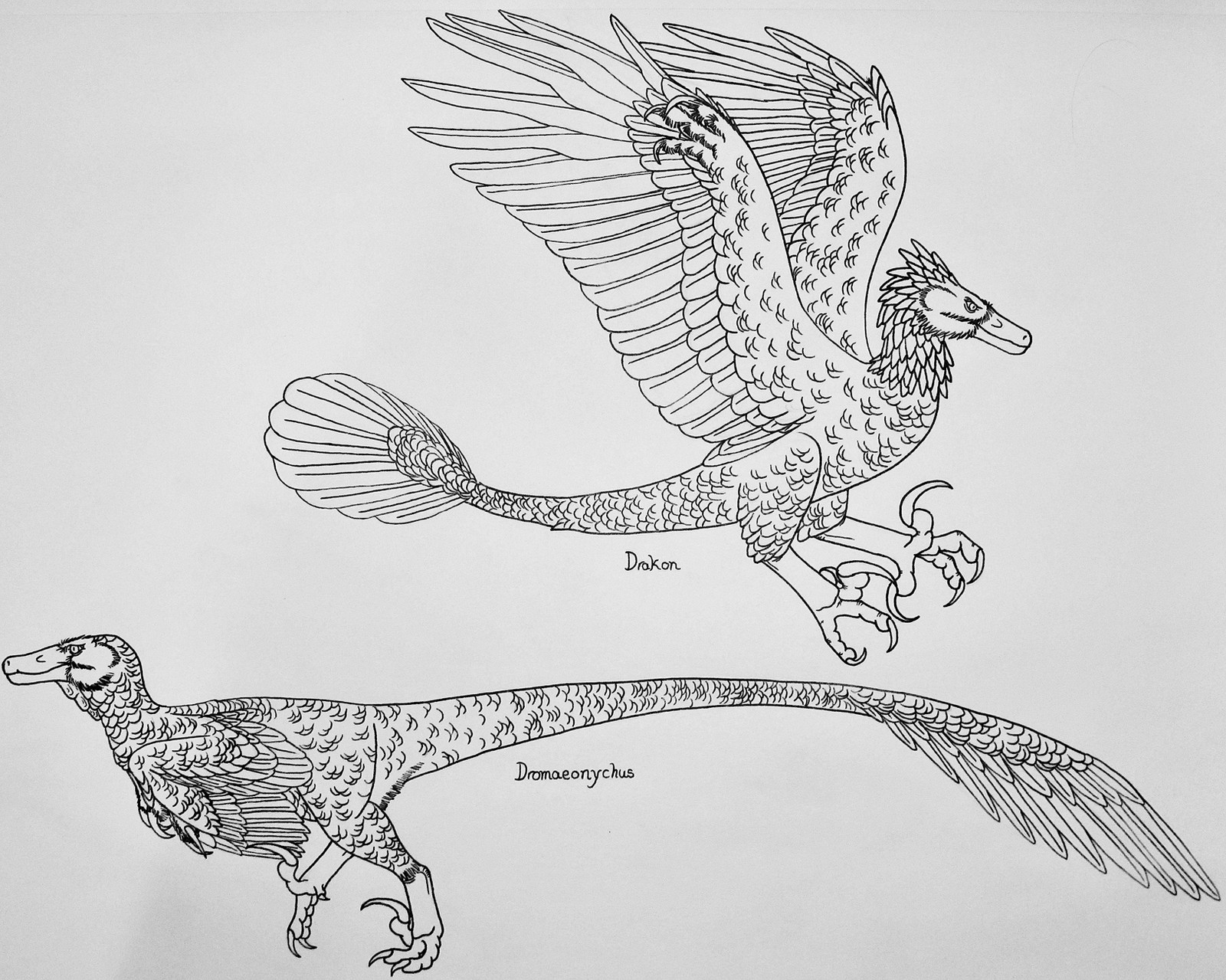HOME | DD
 Saberrex — Dromaeosauridae- Velociraptorinae 4
by-nc-sa
Saberrex — Dromaeosauridae- Velociraptorinae 4
by-nc-sa

Published: 2022-02-08 01:02:31 +0000 UTC; Views: 14461; Favourites: 129; Downloads: 7
Redirect to original
Description
While largely similar in appearance to their ancestors from cretaceous times, the anatomy of modern dromaeosaurids such as velociraptorines are very different; along with with higher intelligence and increased learning capacity, and memory, they also have developed a set of fused ribs that terminate in a powerful breastbone that anchors strong muscles and allows flying genera full capabilities for the necessary upstrokes and downstrokes needed to take flight. In terrestrial genera, this breastbone allows them to create strong slashing strokes with their hand talons. Combined with the flexing power of their killing talons on the hind feet, they can tear prey to pieces in short order. Unlike their ancestors, modern dromaeosaurids also possess pygostyles in many genera, allowing them to fan their tails for display or steering, though they still maintain the long tail for balance, maneuverability, and powering their caudiofemoralis muscles. All of this makes them far more dangerous than their ancestors were, and makes them far more evasive to potential predators.Drakon- Another flying velociraptorine, Drakon is unrelated to the similar Dracodactylus of Africa, but is instead much closer to Gongburaptor on the family tree. Native to South America, this broad-winged predator is a native to the Amazon, where it feeds on arboreal mammals, reptiles, and pterosaurs. Roughly 5-feet long with an eight-foot wingspan, this 30-pound velociraptorine is the apex predator of the jungle canopy. Its talons are excellent killing and climbing tools, and it can crush the armored hide of even arboreal crocodiles. Extremely long-lived, this dromaeosaurid is monogamous, living in mated pairs. Clutches of chicks are small; no more than two eggs per clutch every three years. Drakon mature slowly, taking six years to reach maturity, and three years after hatching to fledge. Once mature, they can live for up to 65 years, with some even breeding into their late fifties. Due to small clutch sizes and long lifespans, these dromaeosaurids can be severely threatened by forest fires that occasionally strike the jungles. As a result, local populations can take many generations to repopulate an area.
Dromaeonychus- A typical velociraptorine, Dromaeonychus is a 6-foot, 100-pound predator native to Eurasia and North America. Four species exist within this genus, each preferring different climates. Some prefer the warmer climates, while others are better adapted to cold. The northern varieties are also larger as a means of combating heat loss. A hunter of small dinosaurs, mammals, reptiles and amphibians, Dromaeonychus' diet varies from region to region. Living in small groups of up to six, it prefers to flush prey and chase it down. It also readily scavenges kills made by other predators. Laying large clutches of eggs to offset predation, Dromaeonychus can have as many as 25 chicks, which are raised to a size where they can fend for them selves after six months. After leaving the young Dromaeonychus spend the next 3 years maturing. Should they survive the gauntlet of rival predators, they can live as long as 20 years, or in rare cases, even 30.




























